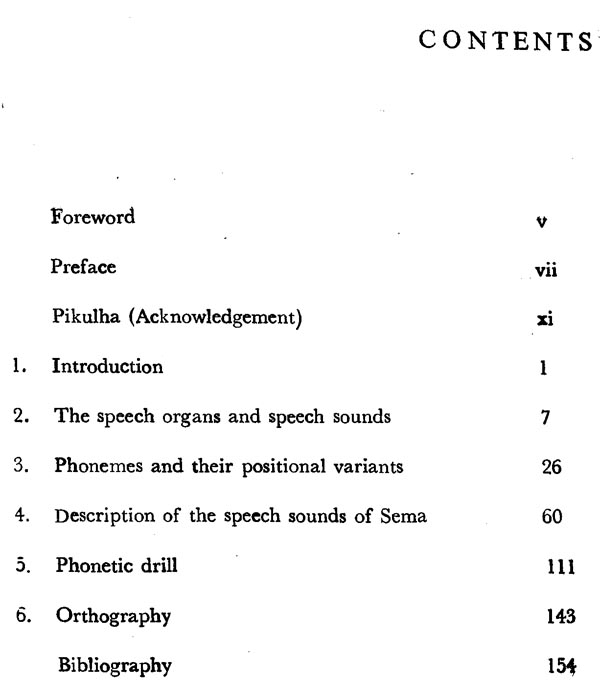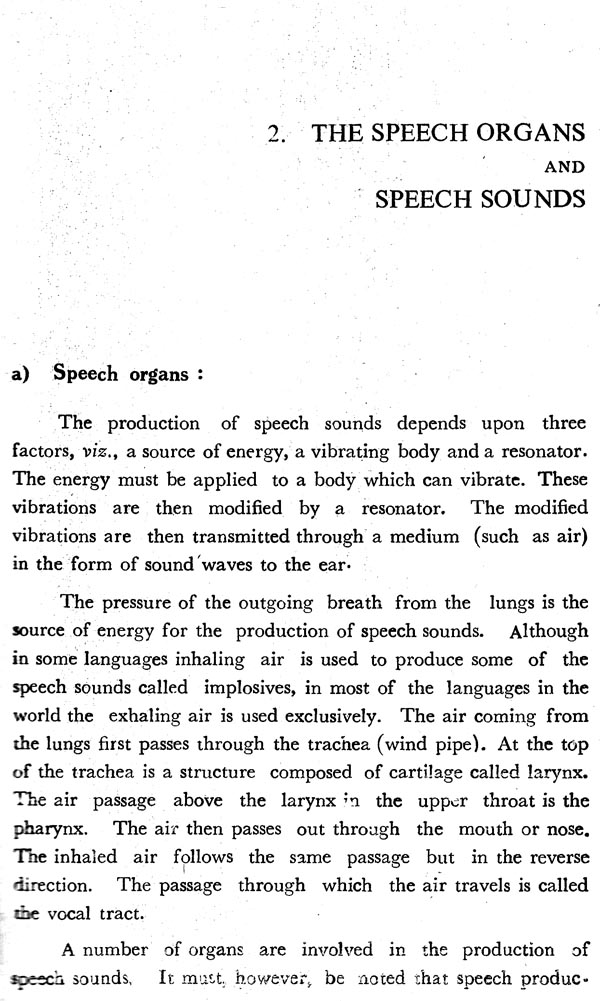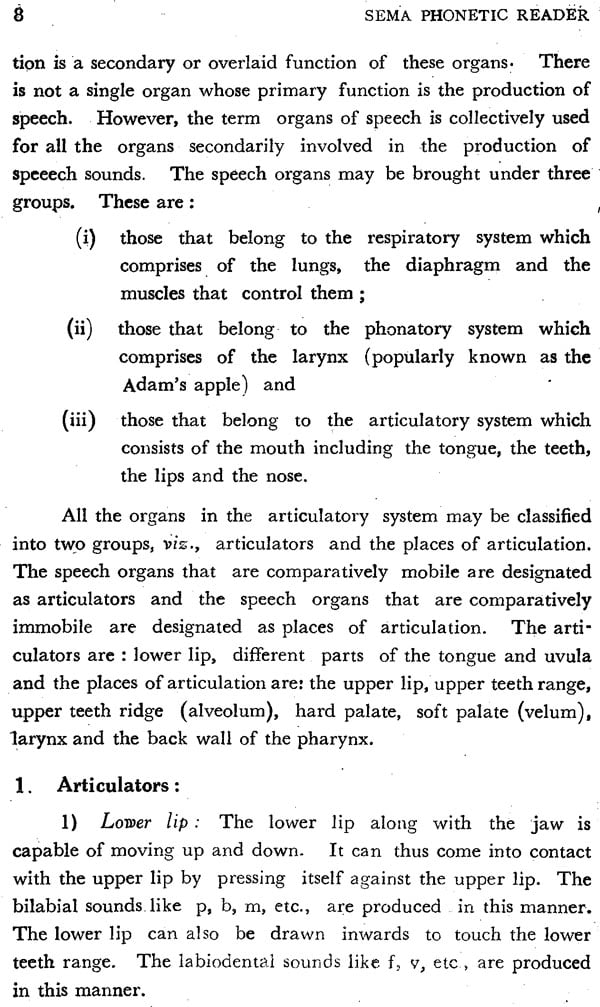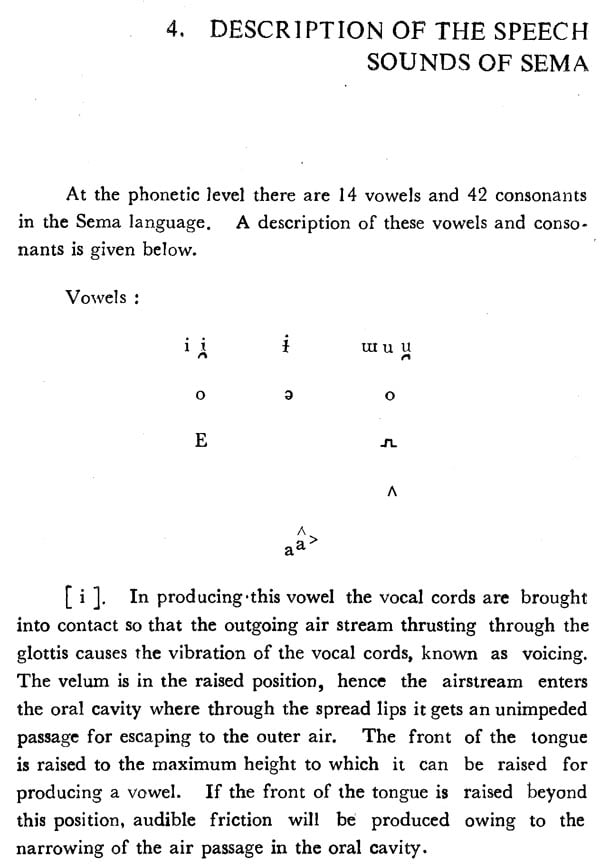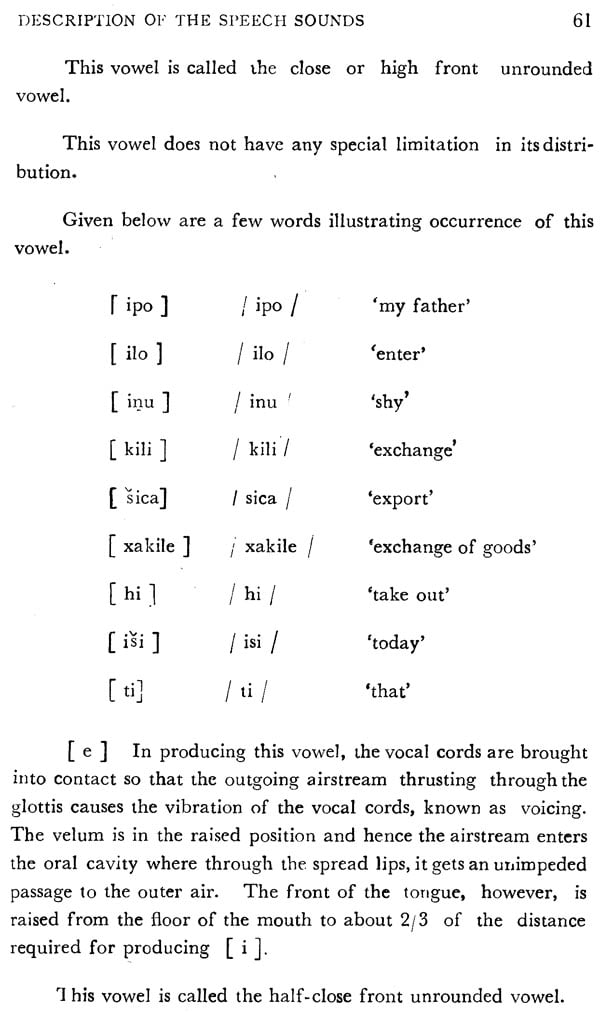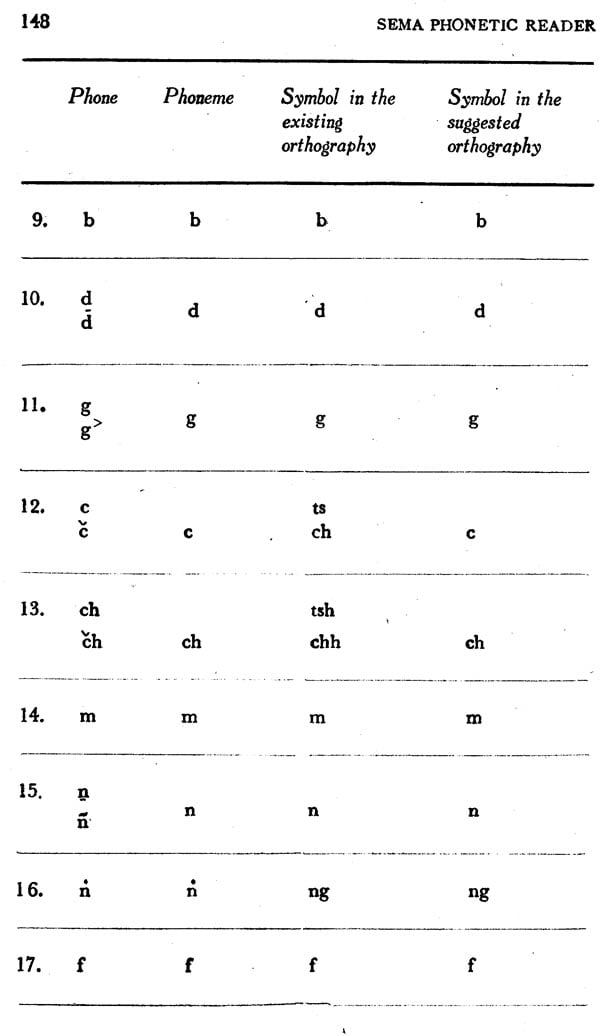
Sema Phonetic Reader (An Old and Rare Book)
Book Specification
| Item Code: | NAW164 |
| Author: | M.V. Sreedhar |
| Publisher: | Central Institute Of Indian Languages, Mysore |
| Language: | English |
| Edition: | 1976 |
| Pages: | 166 |
| Cover: | PAPERBACK |
| Other Details | 8.50 X 5.50 inch |
| Weight | 200 gm |
Book Description
The Institute and its four regional language centres are thus engaged in research and teaching which lead to the publication of a wide-ranging variety of materials. Preparation of materials designed for teaching/learning at different levels and suited to specific needs is one of the major areas of interest of the Institute. Basic research relating to the acquisition of language and study of language in its manifold psycho-social relations constitute another broad range of its interest. The publications will include materials produced by the members of the staff of the Central Institute of Indian Languages and its Regional Language Centres and associated scholars from universities and institutions, both Indian and foreign.
The Central Institute of Indian Languages has initiated the Primetime Reader Series in Indian languages with a view to presenting the range of phonetic variation obtaining in this sub-continent and demonstrating the closeness of language on the basis of phonetic patterning. These Readers are biased towards learning the sound systems of languages. Thus it is hoped that this series will be of interest to both scholars who are interested in phonetic studies and practical learners of languages who wish to make a beginning in their language study.
If these materials help solving the problems in the State and help in understanding the people speaking the language, then our efforts will be deemed to have been amply rewarded.
The Phonetic Reader gives a general description of the human speech sounds and the organs of speech that produce them, the phonemic inventory, a detailed description of the proud-don of the sounds of the particular language drills to practice thesec sounds, and an orthography best suited for that language. The general description of the human speech sounds introduces and explains the technical terminology. The description of the sounds of the language under consideration is made lucid enough for the person not trained in linguistics to understand even, perhaps, at the risk of being repetitive at times. After describing how each sound is produced, the technical name of the sound is given for identification and its distribution in a word. This is followed, wherever possible, by a comparison with the similar sound in other languages assumed to be known to the prospective users of the book. Then comes the list of words containing the sounds. This section will help the reader to identify the sounds of the language he is learning and to reproduce them in isolation and in words. Words for drill are given for the learner to practice correct pronunciation and to differentiate between similar sounds.
The script suggested is normally the script of the majority or the official language of the region. This is to take the barrier of script out for the learner from the majority group and more importantly to ease the switch over of the tribal children from their mother tongue to the majority language at some point in their schooling. This will also make biliterate the tribal adults who can already speak the majority language when they are taught reading and writing of their mother tongue. The modifications given are only suggestive and they take into consideration the conventions of the adopted script, the practices already in vogue if the script is being used by the language under consideration and the technological convenience.
Though the Phonetic Reader is primarily aimed at the language learner and teacher, it is hoped that it will be also useful to linguists interested in typology and universals. The section on script will be of interest to language planners.
Except when the writer himself is the native speaker of the language analysed, data are collected in the field primarily from one informant and then checked with a few other informants. Care is taken to transcribe the sounds as accurately as possible. Still some inadvertent lapses might remain. There might still be room for improving the presentation of the material. Comments and suggestions passed on to us will be useful to improve our future publications in the series.
Book's Contents and Sample Pages
